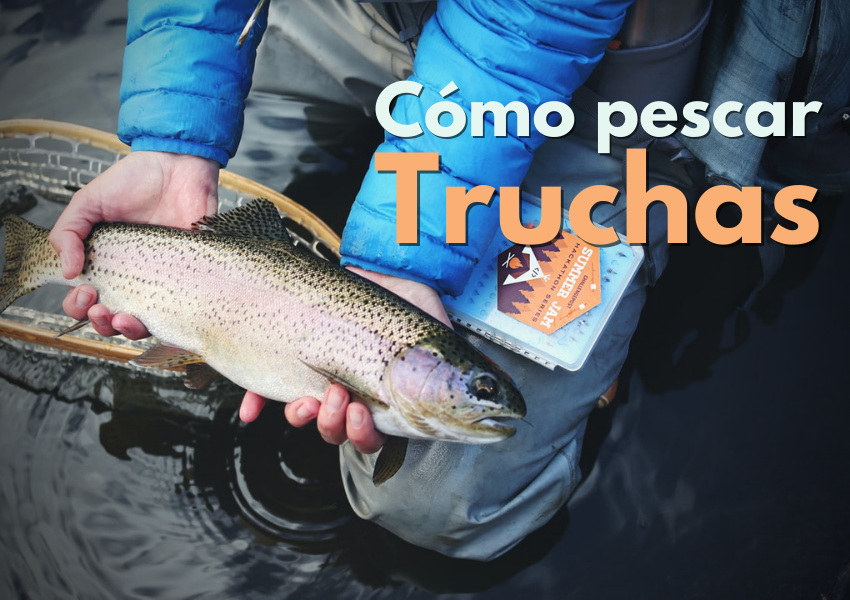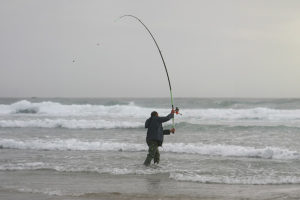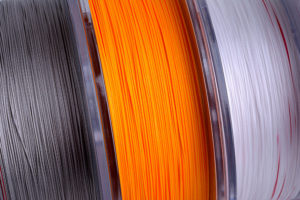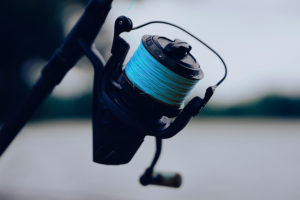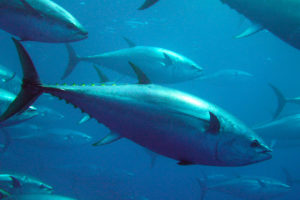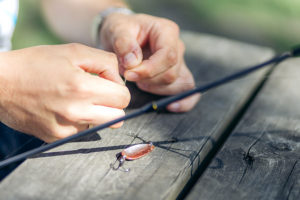Pescar truchas no es tan simple como llegar al río o pantano, lanzar nuestra caña por cualquier sitio y comenzar a sacar capturas. La pesca de la trucha requiere conocimientos específicos en cuanto a equipos de pesca y consideraciones. Se trata de una especie muy desconfiada, territorial, fuerte y luchadora, lo que convierte a la pesca de la trucha como una de las más populares de todo el mundo.
Las truchas residen normalmente en ríos que cuentan con aguas puras, bien oxigenadas y no demasiado frías, ni demasiado calientes (entre unos 4º y 22ºC). Se suelen localizar cerca de los troncos, piedras o cualquier lugar donde pueda esperar para emboscar a su presa y no perder demasiada energía en el proceso.
Te contamos todo lo que necesitas saber para iniciarte en la pesca la trucha: las características y hábitos de la especie, dónde encontrarlos, las mejores técnicas y tipos de cebos y señuelos a tener en cuenta para pescar truchas.
Características de la trucha común
Las truchas son una especie depredadora y carnívora, con una dieta basada principalmente en la captura de invertebrados y de pequeños vertebrados acuáticos. La trucha común es más activa por la noche que por el día, pero especialmente durante el anochecer y el amanecer. La nocturnidad de las truchas comunes puede ser debido a que muchos invertebrados son más activos por la noche y, por lo tanto, más vulnerables a su captura. Otras especies, como la trucha arcoíris es más activa durante las horas de luz.
Durante el día, las truchas quedan al acecho de sus potenciales presas, manteniéndose en zonas donde hay corrientes por las que pasen por delante suya. Las truchas permanecen entre las rocas, troncos y otros lugares donde poder acechar a sus presas, sin tener que hacer un alto esfuerzo.
La época del año de mayor actividad de las truchas es durante la primavera, especialmente durante el anochecer y el amanecer. Las truchas suelen permanecer en un mismo punto durante las horas de luz, pero durante el anochecer se desplazan a las zonas de mayor corriente, en busca de invertebrados que poder cazar. Durante la primavera, es más fácil pescar truchas porque, aunque las truchas se encuentren más “estáticas” que durante la noche, también son propensas a atacar a sus posibles presas que se desplazan río abajo y pasan por delante de ellas.
Las truchas son especies muy territoriales. Algunos estudios han demostrado que, aunque las truchas suelen cambiar de posición durante todo el día, cada trucha suele ocupar un territorio concreto en cada momento, durante todos los días. Esto quiere decir, que una misma trucha es probable que a cierta hora del día, cada día, se encuentre en una zona concreta. Si quieres volver a pescar una trucha en concreto, es probable que la encuentres en el mismo sitio que la vez anterior.
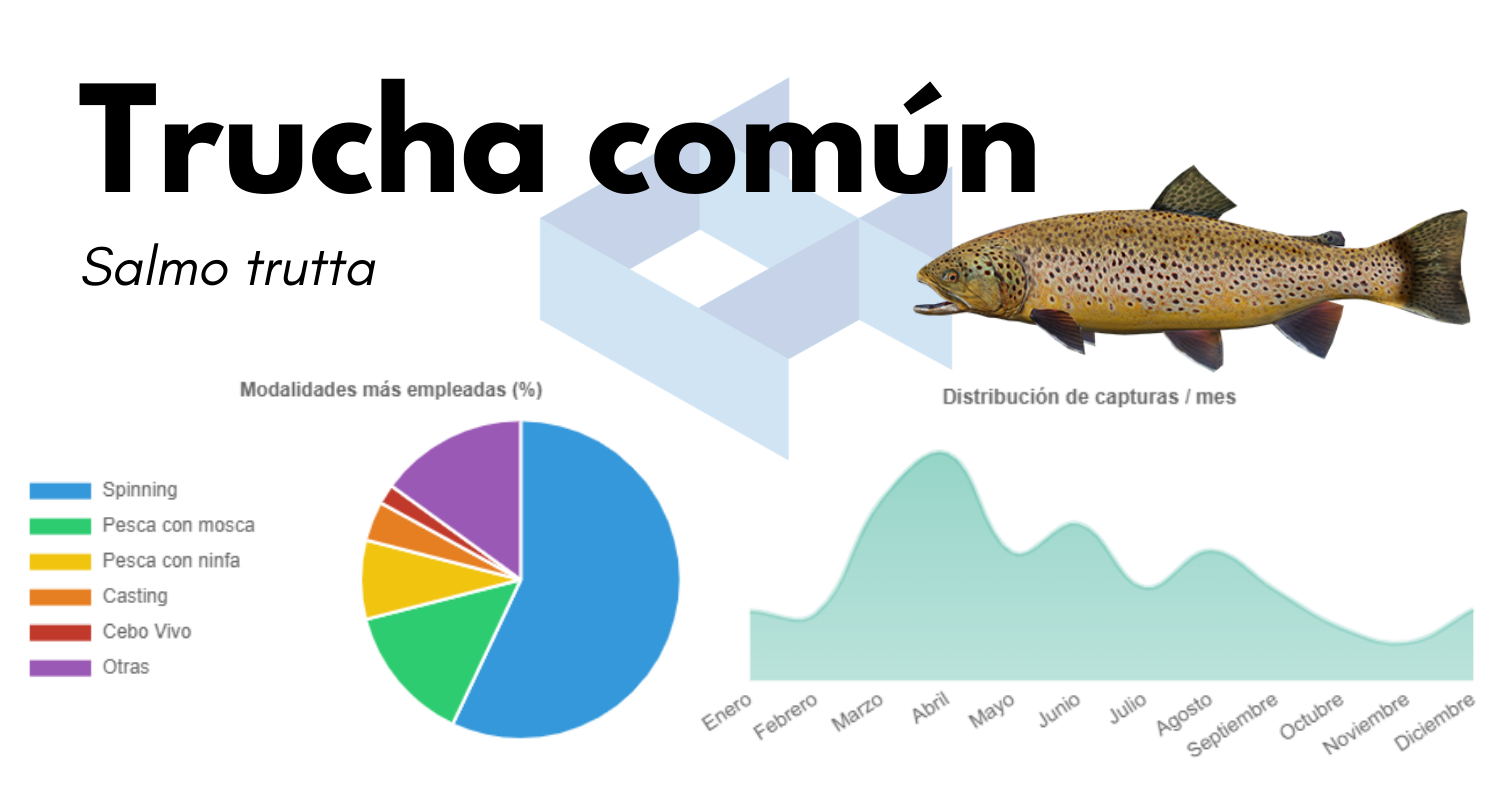
Cebos y señuelos para pescar truchas
Hay una gran variedad de señuelos y cebos que podemos utilizar para pescar truchas. Nuestro objetivo, tanto con cebo de pesca natural o artificial, será atraer la atención y el apetito de las truchas, mediante el olor, sabor y movimiento.
Los señuelos preferibles por excelencia para la pesca de truchas son las cucharillas de pesca. Son excelentes para pescar durante las horas de más actividad de las truchas (durante el amanecer y el atardecer), ya que la turbulencia del agua permite un movimiento más natural del señuelo. Es muy importante que no estén oxidadas y es recomendable usar colores vivos, ya que con la corriente, la trucha puede no darse cuenta del paso del señuelo.
Otras opciones de señuelo artificial son los minnows o los jerkbaits. Si cuentan con babero, este les permite realizar movimientos, fingiendo ser un pez herido y fácil de capturar. Algo que permite a la trucha decidirse en capturarlo sin malgastar demasiada energía.
En el caso de los cebos naturales, las huevas de salmón suelen ser una buena opción para pescar truchas. Pero lo que más destacan son las lombrices de tierra y los insectos como polillas, saltamontes o grillos. En general, para las especies de agua dulce, suele ser también muy útil la fabricación de masilla o engodos para atraer a las truchas con el posible olor y sabor del cebo.
Cómo pescar truchas en ríos
Antes de intentar pescar truchas en el río, es importante estudiar previamente el propio río y las condiciones en las que se encuentran las truchas. En los ríos nos podemos encontrar con distintos recursos naturales como las pozas (de menor o mayor profundidad), nos podemos encontrar tablas, corrientes, saltos de agua, etc. Por eso, debemos conocer los mejores puntos para lanzar en cada uno de esos lugares y los comportamientos de las truchas en ellos.
Los puntos del río donde la corriente pierda rápidamente fuerza son zonas a tener en cuenta para pescar truchas. Puede que las zonas con rocas, un puente o una acumulación de troncos, provoquen que el cauce del río descienda más lentamente. Es en estas zonas donde las truchas suelen esperar a que sus presas pasen por delante de ellas, mientras las truchas siguen acechando entre las rocas o troncos. Debemos fijarnos en los obstáculos sumergidos, ya que existe una gran posibilidad de encontrar truchas en ellos.
Al ser una especie muy territorial, en las pozas suele haber conflicto entre los ejemplares más grandes y los más pequeños. Esto se debe a que son lugares donde se acumula bastante alimento. Las especies más grandes suelen descansar en las zonas más profundas, por eso, debemos intentar llegar a esas zonas más profundas para pescar las truchas más grandes.
Las tablas son unas de las zonas más bonitas para capturar para pescar. Suelen venir precedidas de una corriente que disminuye su fuerza, por lo que las truchas suelen ir a descansar en esas zonas. Es en las entradas de las tablas donde las truchas centran su caza y dónde tendremos más posibilidad de pescar truchas. En estos tramos podemos insistir mucho, utilizando señuelos como cucharillas o algún minnow de colores llamativos, para atraer la atención de las truchas pese a la corriente.
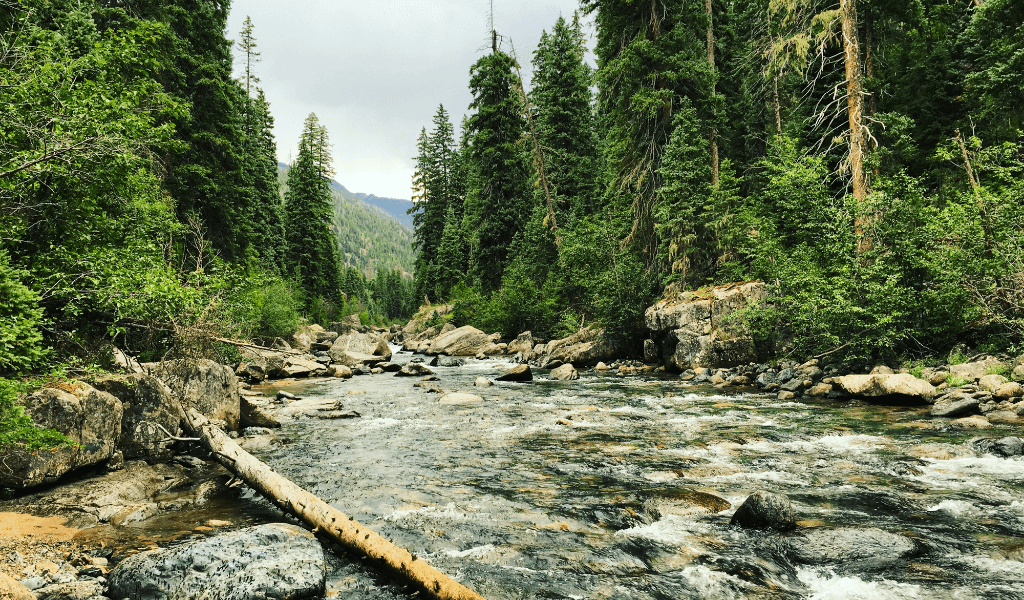
Cómo pescar truchas en lago
Si te propones a pescar en un lago o estanque, es probable que encuentres las llamadas truchas de lago. Te contamos algunos consejos que puedes tener en cuanto a la hora de intentar capturar a este tipo de truchas.
Lo primero que deberíamos observar es la profundidad del lago en sus distintas áreas. Para esto, nos sería muy útil contar con una sonda de pesca. Las truchas de lago suelen adentrarse en aguas más frías. Por tanto, en los meses más cálidos o en las horas centrales del día, es más común que se encuentren en las partes más profundas, donde no es tan fuerte la incidencia del sol.
Uno de los cebos de pesca naturales más comunes para este especie de trucha es la lombriz de tierra. Aunque también podemos capturar este tipo de truchas con señuelos artificiales. Es recomendable usar señuelos ligeros, que cuenten con algún tipo de brillo para atraer a estos depredadores.
Si las truchas no están mordiendo, lo mejor es que pruebes con otro tipo de cebo/señuelo, aunque solo sea cambiar el color. Puede que no todos los días te funcione el mismo tipo de carnada o de señuelo. Si han pasado media hora y no has tenido suerte, lo mejor es que pruebes con otro tipo de reclamo.
Como contábamos al principio, las horas de mayor actividad de las truchas es durante al atardecer y el amanecer. Esta es una característica bastante común en las especies de agua dulce. Normalmente, durante las horas centrales del día y los momentos de mayor calor, este tipo de peces son menos activos.
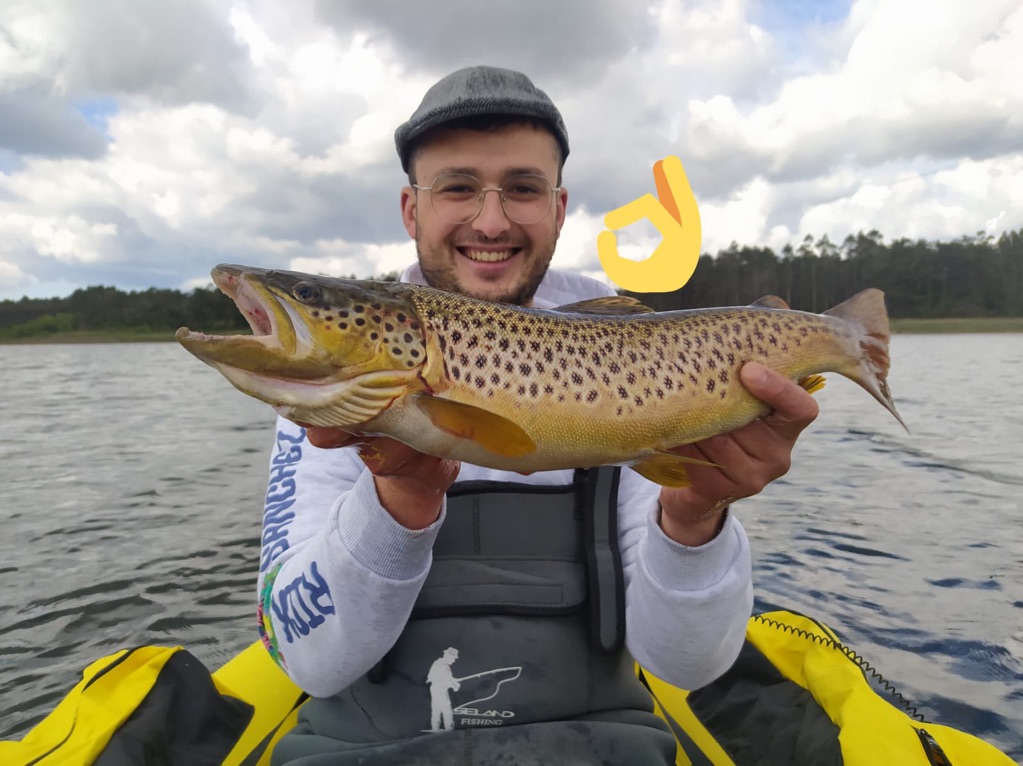
Capturar truchas en pantanos
La pesca de truchas en pantanos nos permite sacar capturas de mayor tamaño que en lagos y ríos. Esto se debe a que las truchas suelen crecer con más rapidez en los pantanos.
Para pescar truchas en pantanos es recomendable pescar con técnicas de spinning y con cebos naturales. Se aconseja el uso de equipo ligero, con una caña de dos metros o dos metros y medio de longitud. Respecto a las líneas que utilicemos, las líneas de pesca trenzadas nos permitirán lanzar más lejos y mayor confianza durante la pesca de la trucha. Si optamos por el uso de señuelos, en lugar de cebos de pesca naturales, podemos optar por señuelos sumergibles y de colores naturales.
Trucos para pescar truchas con éxito
El éxito a la hora de pescar truchas dependerá, en gran medida, que el equipo de pesca que escojas sea el adecuado. Por eso, es importante ir bien equipado a la jornada de pesca, con distintos tipos de señuelos y cebos, porque quizás lo que te ha servido un día, no te funciona para el siguiente.
Durante la primavera las truchas están más activas, debido al aumento de la cantidad de insectos e invertebrados que pueden encontrar. Es por eso, que en esta época del año, es recomendable utilizar cebos como las lombrices de tierra o señuelos tipo mosca en forma de polillas.
En el caso de realizar pesca con mosca para pescar truchas, realiza lances largos. De esta forma, puedes posicionar el cebo en río arriba e ir descendiendo de una manera más natural al encuentro con la trucha.
Para probar distintos señuelos o cebos de forma rápida y sencilla, es muy útil tener un emerillón de pesca. Así podremos cambiar nuestro señuelo sin necesidad de cortar el bajo de linea.
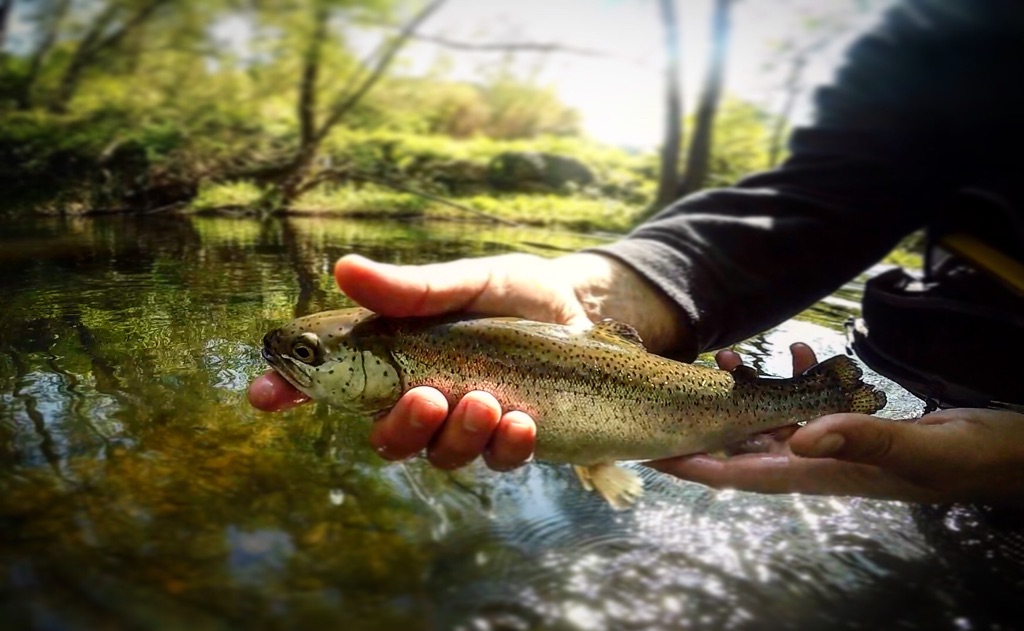
Puedes comprobar la actividad de las truchas en tus zonas de pesca con WeFish: Solo tienes que acceder al FishGuru y tendrás información detallada de la actividad de las especies de tu zona, además de recomendaciones de los mejores materiales de pesca y técnicas para capturarlas. Pero lo mejor es que es totalmente gratuita.
Ahora ya sabes cómo pescar truchas y tienes WeFish, la herramienta perfecta para los pescadores. Comparte tus capturas en WeFish, descubre y aprende técnicas y habilidades de pescadores de todo el mundo. ¡Buena pesca!

